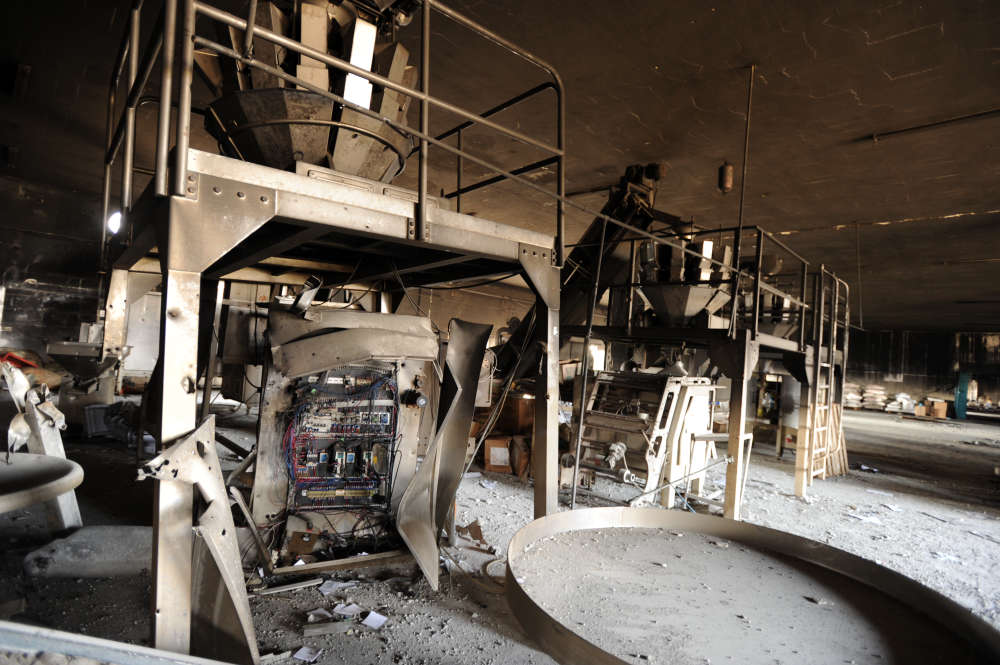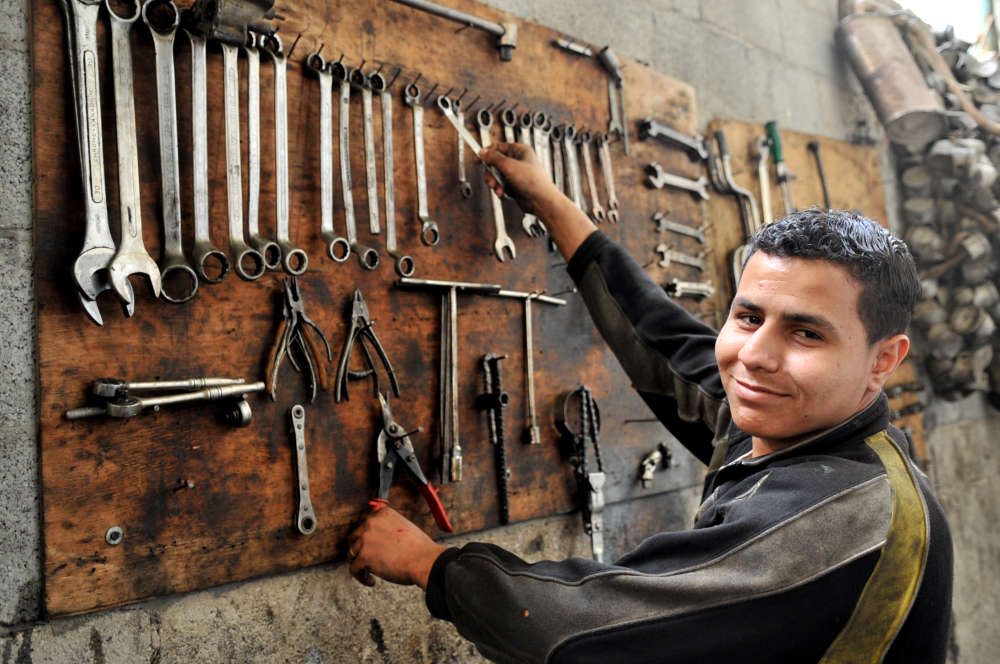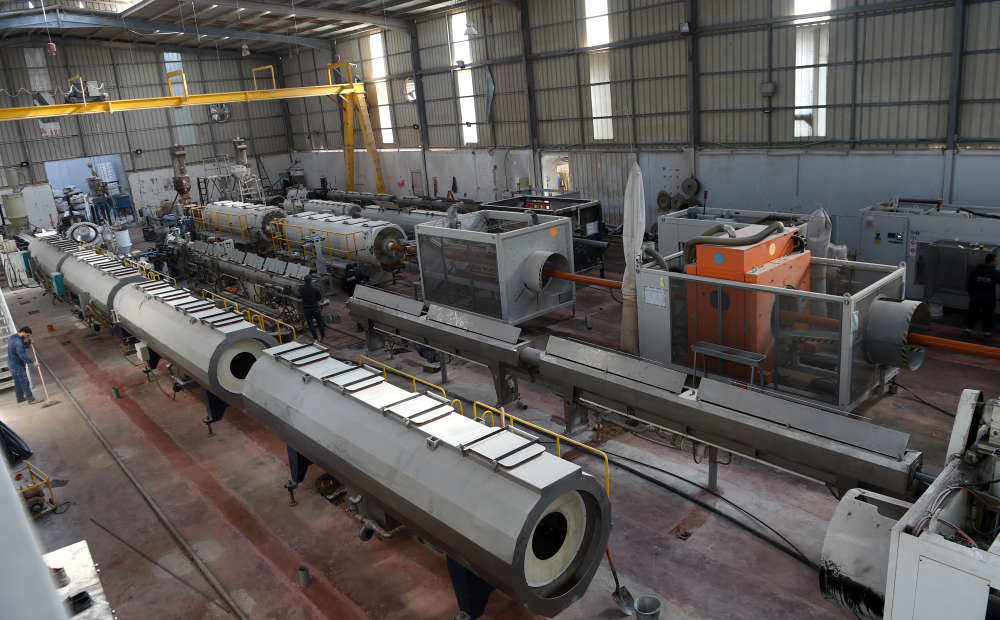Before the year 2000, the private sector, and more specifically the industrial sector, was a major source of income for a third of Gaza’s population. It employed more than 110,000 workers, including 55,000 in the industrial sector, brought hope to thousands of job seekers, and achieved an annual growth rate of around 5 percent. Since 2000, however, this rate has dropped sharply, which has led to increasing rates of unemployment, especially among the poor and vulnerable segments of Gazan society. Even before the 2008 war, the private sector had faced losses of approximately US$ 400 million as a direct result of Israeli measures in the wake of the second Intifada. Following the June 2007 events, during which Hamas took over power in the Strip, the imposed tight siege paralyzed the industrial sector. According to a study by the Palestinian Federation of Industries, due to the impact of the siege, 97 percent of factories have been closed since 2000, and 98 percent of their workers are still without jobs as of 2018.
The industrial sector has suffered greatly from the repeated assaults on Gaza, as have other vital sectors in the Strip. During the 2008–2009 war, it was the most damaged sector. Israeli occupation forces targeted the national economy, and statistics indicate that 428 industrial facilities were damaged. In 2012, 59 facilities were damaged; and during the 2014 hostilities, 860 facilities. These numbers show that the industrial sector was among the main sectors specifically targeted – which is devastating, considering the sector’s importance in building an independent Palestinian national economy.
The infrastructure segment of the industrial sector, the backbone of other industries, was particularly strongly impaired. The bombings directly and systematically targeted infrastructure and equipment in order to wreak as much havoc as possible. Overall, more than 300 infrastructure companies were damaged during the past three wars, with the industrial workshops of the engineering and metal industries being specifically targeted.
Gaza’s industrial sector has been systematically targeted not only in the three assaults of 2008–2009, 2012, and 2014, but also through subsequent measures that include restrictions on the import of raw materials, the movement of businesspersons, and the lack of electricity.
These damages have had a strong and negative impact on the industrial economy. They have increased Palestinian dependence on the occupation because the Paris Protocol, the economic agreement of the Oslo Accords, stipulates that imported goods have to be purchased first and foremost from Israel. These damages also caused a crisis among the industrial workers, increased the rate of unemployment – that is currently more than 49 percent – and affected the Palestinian social fabric.
However, the damage to the industrial sector was not restricted to wars; additional measures were implemented to destroy Gaza’s industry and economy. The fuel and electricity crisis has impeded the ability of the remaining industry to respond to local community needs. With only four hours of electricity per day, factories have not been able to perform well or operate long enough for production lines to meet demand. Also, the shortage has increased financial burdens on factory owners, who must use costly generators to stay in business. These measures have weakened the ability of local products to compete with imported goods.
Supporting Gaza’s industrial facilities and preventing their collapse is a national and ethical obligation. Such support will secure more than 40,000 jobs per year, giving Gazans a dignified life and strengthening their social cohesion. Moreover, it will strengthen the identity of national products and sustain the Palestinian economy.

Moreover, the Israeli access and movement restrictions imposed on business owners, the ban on the entry of basic materials, raw materials, and machine spare parts, and the prevention of factory-product export have all negatively impacted the industry and its resilience in the face of enormous challenges.
The industrial sector has benefited to some extent from compensation funds that were provided by many countries and by international organizations, among them Kuwaiti and Qatari grants and many smaller contributors. However, the damages incurred in these three hostilities were so extensive that they have almost paralyzed the sector, and the distributed compensations have barely been able to alleviate this situation. For example, the industrial facilities that were damaged during the 2008–2009 war received an overall compensation that amounted to almost US$ 18.451 million, but this covered only 11 percent of the total damages. Following the 2012 hostilities, the industrial sector was not compensated, even though the Islamic Development Bank through the Palestinian Federation of Industries assessed that among 550 facilities from various sectors, 169 factories were affected, with damages estimated at around US$ 8.5 million. In 2014, 860 factories were damaged, but only 7 percent of allocated compensation was actually paid.
The Palestinian government’s involvement and support is crucial for the Palestinian industrial sector, as it must embrace the recovery of the sector and stop it from collapsing. But the measures that have been imposed by the Palestinian Authority on Gaza since April 2017 have had a catastrophic impact on all levels. Business owners are unable to carry out their basic duties, such as covering their workers’ salaries and buying raw materials, due to a weakened market and decreased purchasing power. Instead, the repair of the industrial sector should entail the government’s acceleration of compensation programs and the reconstruction of destroyed factories; policies must be adopted that serve the sector, protect national products, organize importing procedures, and impose pressure on the Israeli side to facilitate the movement of goods, raw materials, and businesspeople across borders.
Improvement of the Palestinian industrial sector will reflect positively on the economy and society of the Gaza Strip. The industrial sector has traditionally been the biggest employer of Palestinian workers; thus, support of Gaza’s industry will lead directly to a decrease in the currently ever-increasing unemployment rate.
Despite all the challenges faced by Gaza and its industrial sector, many people still carry the hope and vision that the situation will improve and the industrial sector will flourish. Sustainable strategic plans are required to create an enabling productive environment and provide machines, equipment, and raw materials, as well as technological and technical support. Such measures will enable the industrial sector to respond to market needs; they will also strengthen local products that are currently unable to compete with foreign products in terms of quality and packaging, facilitate the improvement of marketing plans, and help increase administrative abilities. Such support will also expand industrial companies’ prospects of engaging in export, especially among those that used to export to Israeli and international companies. Gaza could be allowed to flourish. But that requires political will and supportive action.
Article photos courtesy of UNDP/PAPP.




